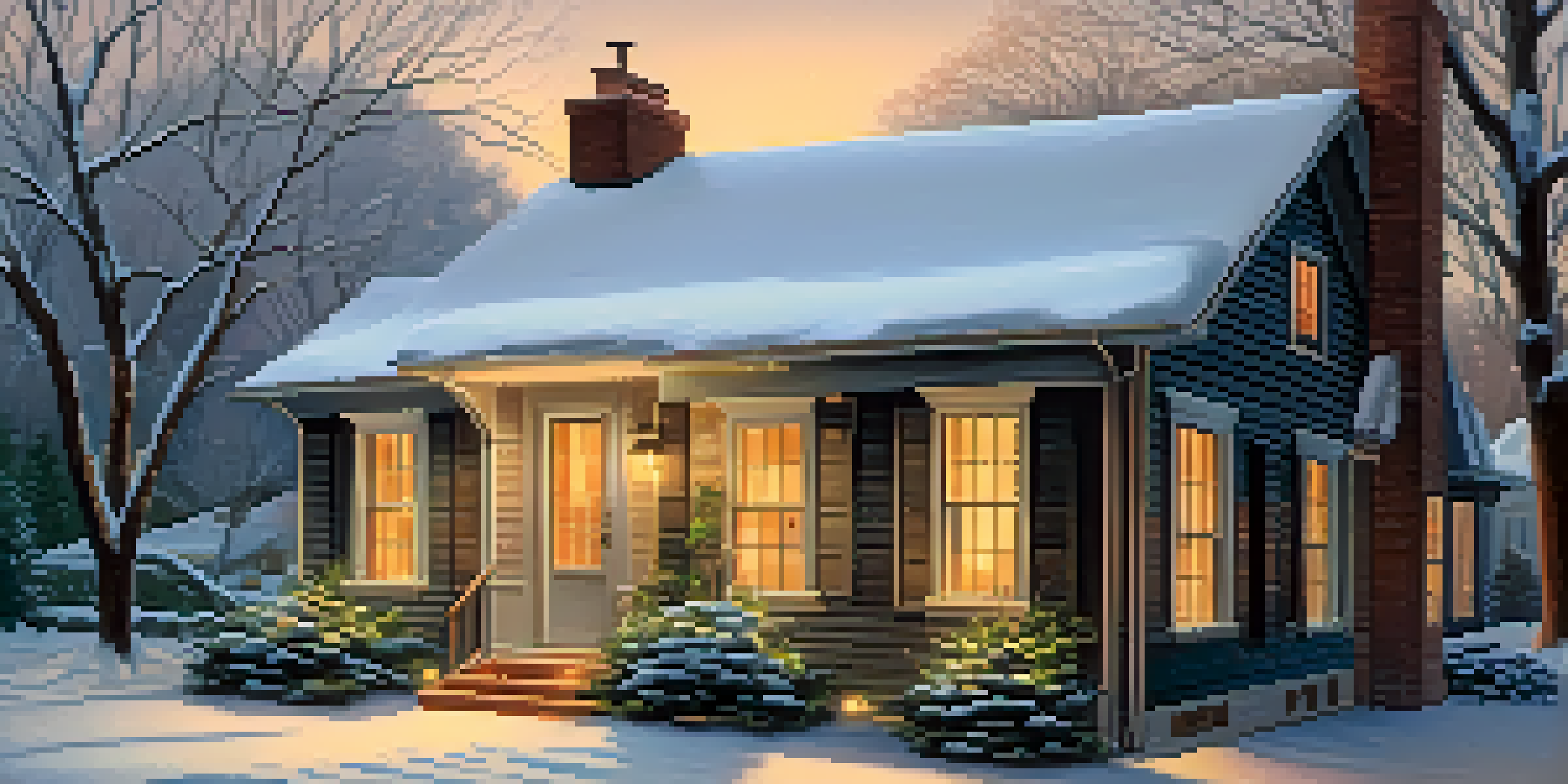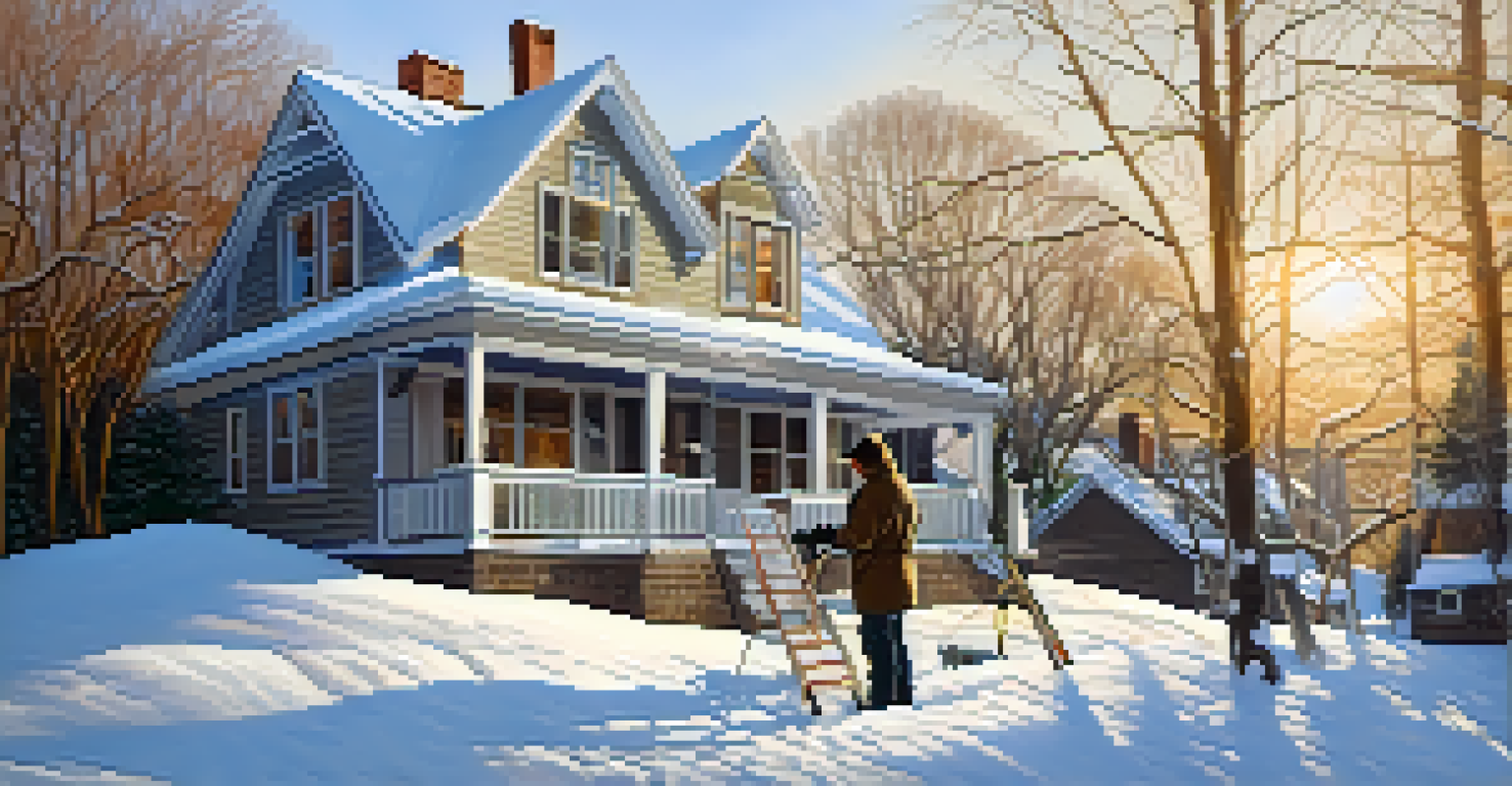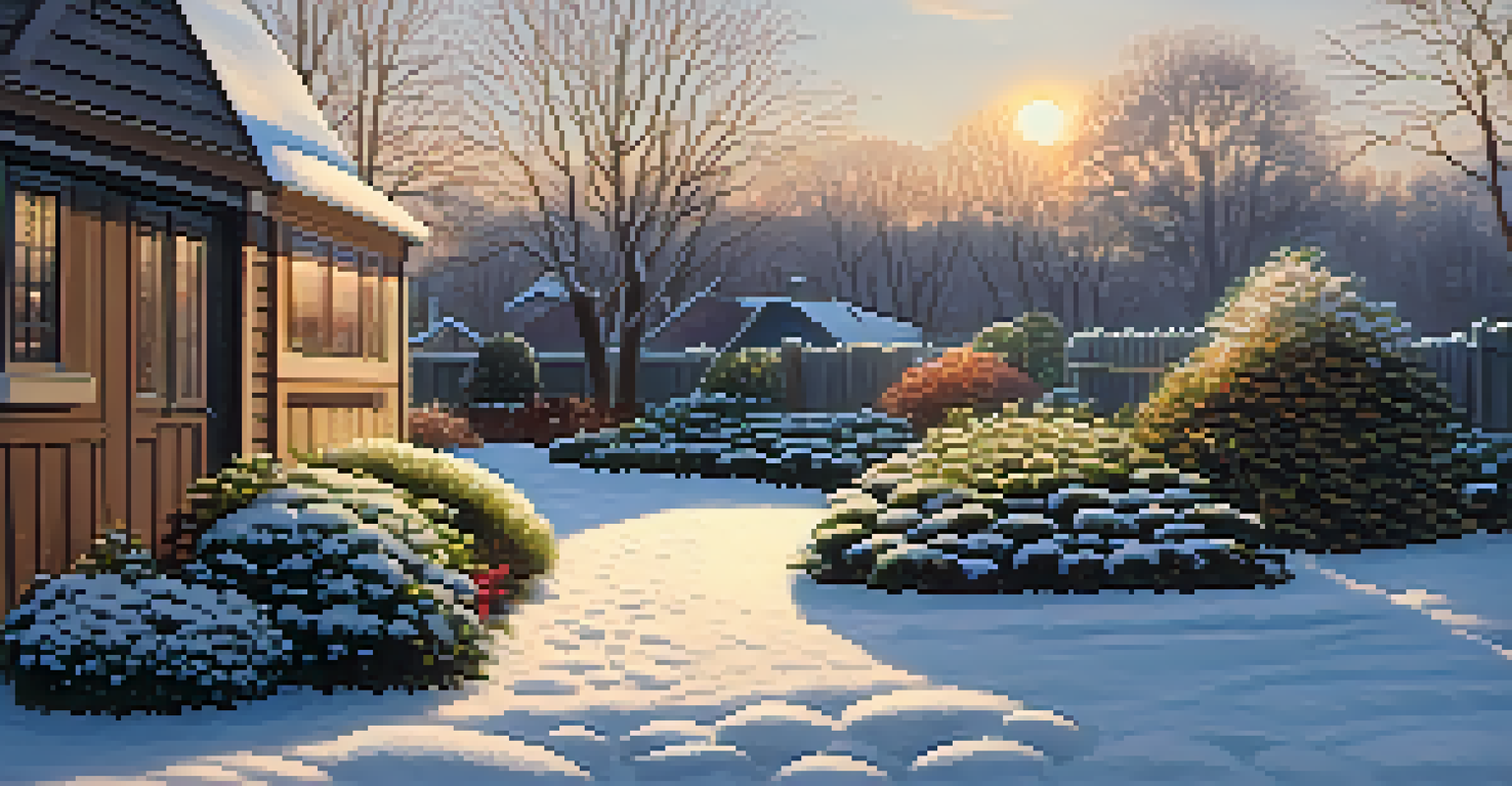Winter Home Maintenance Tips: Protect Your Property Today

Inspect Your Roof for Winter Damage and Leaks
As winter approaches, it’s crucial to check your roof for any signs of damage. Look for missing shingles, cracks, or any areas where snow could accumulate, leading to potential leaks. Remember, a small issue now can turn into a costly repair when spring arrives.
An ounce of prevention is worth a pound of cure.
Consider hiring a professional for a thorough inspection, especially if your roof is steep or high. They can spot potential problems that might not be visible from the ground. Additionally, clearing gutters and downspouts of leaves and debris will help prevent ice dams that can cause leaks.
By taking these proactive measures, you can ensure your roof will withstand the weight of snow and prevent water damage to your home. A well-maintained roof not only protects your property but also enhances its overall value.
Seal Windows and Doors to Keep the Cold Out
Drafty windows and doors can significantly increase your heating bills during winter. To combat this, inspect all entry points for gaps and cracks where cold air could seep in. A simple solution is to apply weather stripping or caulk to seal these openings.

You can also use window film to add an extra layer of insulation. This not only keeps your home warmer but also helps reduce energy costs. In many cases, a little time spent sealing up your home can lead to major savings on your heating bills.
Inspect Your Roof for Damage
Regularly checking your roof for damage can prevent leaks and costly repairs during winter.
Remember, a cozy home is not just about comfort; it's also about efficiency. Properly sealed windows and doors will make your living space more inviting and help maintain a consistent temperature throughout the winter months.
Check Your Heating System for Optimal Performance
Before the cold weather sets in, it’s wise to have your heating system inspected. Whether you have a furnace, boiler, or heat pump, ensuring it’s running efficiently is key to keeping your home warm. Regular maintenance can extend the life of your heating system and prevent unexpected breakdowns.
The best way to predict the future is to create it.
Change the air filter in your heating system regularly to improve air quality and efficiency. A clogged filter can restrict airflow and cause your system to work harder, which not only wastes energy but can also lead to costly repairs down the line.
If you haven't already, consider scheduling a professional tune-up. This small investment can provide peace of mind and help you avoid chilly surprises on the coldest nights of winter.
Prepare Your Plumbing to Avoid Freezing Pipes
Frozen pipes can lead to major headaches during winter, resulting in expensive repairs and water damage. To prevent this, insulate pipes in unheated areas of your home, such as the basement and attic. Pipe insulation is affordable and can save you from a lot of trouble when temperatures drop.
Additionally, let faucets drip slightly during extreme cold to keep water moving through the pipes. This simple action can prevent water from freezing. Make sure to also disconnect outdoor hoses and shut off exterior faucets to protect your plumbing.
Seal Windows and Doors Efficiently
Sealing gaps in windows and doors helps maintain a warm home and reduces heating costs.
By taking these steps, you can safeguard your plumbing and ensure that you have access to water even in the coldest months. It’s a small effort that can save you a lot of stress and expense.
Inspect and Maintain Your Home's Exterior
Your home's exterior takes a beating during winter, so it's important to give it a thorough inspection. Look for any cracks in the foundation or siding that could let in cold air or moisture. Addressing these issues early can prevent larger problems as winter progresses.
Also, make sure to clear any debris from around your home, including leaves and branches. This not only helps with drainage but also minimizes the risk of ice buildup. If you have any outdoor furniture, consider storing it or covering it to protect it from harsh weather.
Maintaining your home's exterior is about more than just appearances; it’s about protecting your investment. A well-kept exterior can enhance your home’s curb appeal and reduce long-term repair costs.
Prepare Your Yard for Winter Weather
Your yard deserves some TLC before winter hits. Start by trimming any overgrown bushes or trees that could pose a risk during storms. Ice can weigh down branches, leading to breakage and potential damage to your home or vehicles.
Next, consider mulching your flower beds to protect plants from freezing temperatures. Mulch acts as insulation, helping to keep the ground temperature more stable and protecting roots from the cold. It’s an easy way to ensure your garden survives the winter.
Prepare Plumbing to Prevent Freezing
Insulating pipes and allowing faucets to drip can safeguard your plumbing from freezing in cold weather.
Finally, store away any outdoor tools or equipment to prevent rust and wear. A well-prepared yard not only looks good but also ensures that your plants and landscaping thrive come spring.
Stock Up on Winter Supplies for Emergencies
Winter storms can be unpredictable, so it's wise to stock up on essential supplies. Keep a supply of non-perishable food, bottled water, and medications in case you’re snowed in. A well-prepared pantry can make those long winter days much more manageable.
Don’t forget about keeping your home safe during power outages. Flashlights, batteries, and a battery-operated radio are important items to have on hand. You might also consider investing in a generator to keep essential appliances running during an outage.

Finally, have a first-aid kit ready for any minor emergencies. Being prepared not only provides peace of mind but also ensures that you and your family can weather any storm that comes your way.
Create a Winter Maintenance Checklist for Your Home
Having a winter maintenance checklist can help ensure you don’t overlook any important tasks. Start by listing out all the areas in your home that need attention, from the roof to the basement. Breaking it down into manageable steps can make the process feel less overwhelming.
Schedule specific days to tackle each task, whether it's cleaning gutters or checking insulation. This way, you can stay organized and ensure your home is fully prepared for winter. Plus, checking items off your list can give you a satisfying sense of accomplishment.
Remember, each small effort contributes to the overall health of your home. A well-maintained home not only provides comfort but also helps you avoid costly repairs down the line.